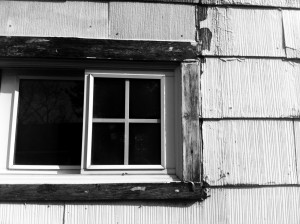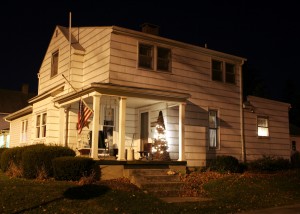
Weathered Transite on a House built in 1961
Transite is a trade name for Johns-Manville asbestos-cement wallboard and sheeting products. The word eventually grew to be used as a generic name for any cement board that typically has asbestos added to the matrix to strengthen, reduce the overall weight, and stabilize thermal variance.
Transite is most generally found in your house in the following forms:
- Siding (typically 1′ x 2′ panels)
- Roofing (corrugated sheets, tiles, or shingles)
- Soffit and Fascia Panels
- Wall panels
Not quite so common, yet possible forms in your home are:
- Flue/Exhaust Ducts (for furnaces, boilers, and water heaters)
- Air Ducts
- Sanitary sewer drain piping
- Ceiling tiles
- Landscape edging
Unless there is direct damage or renovation that will directly impact the material, Transite in good condition should be generally left in place. Some has been well protected under a coating (or two or twelve) of paint or entombed under other materials, such as vinyl siding.

Transite siding in (apparent) good condition.
The problem is, due to the age of most installed residential Transite panels, a lot that has been exposed to the elements is near the end of it’s usable life. It happens a million ways – tree limbs falling, stray baseballs from kids playing in the yard, Wind vibration (especially here in the St. Louis area) and even direct impact by hail (again, Midwest) can make transite siding weak and susceptible to fiber release. And this damage is not always visible on the exterior of your house.
Not all transite contains asbestos. Before you renovate, contact a licensed asbestos inspector to properly assess the materials in your home and, if necessary, sample and have a qualified laboratory analyze.
